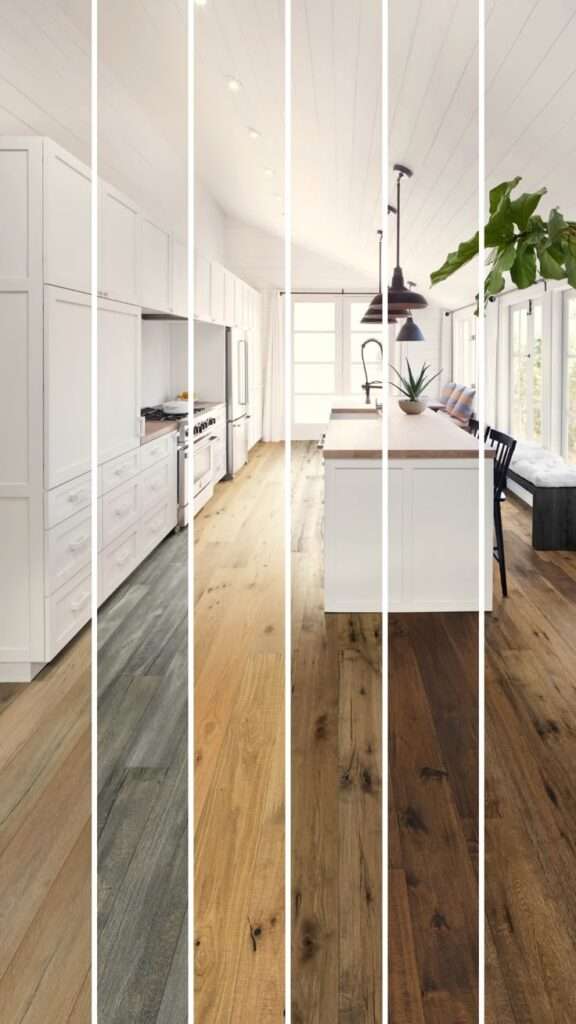Choosing the right flooring for your home is a crucial decision that impacts both aesthetics and functionality. With various materials, styles, and durability factors to consider, selecting the perfect flooring can be overwhelming. This guide will help you navigate the best flooring options based on your lifestyle, budget, and design preferences.

1. Consider Your Lifestyle Needs
Before selecting flooring, evaluate how the space will be used and who will be using it:
- High-Traffic Areas: Durable options like tile, vinyl, or hardwood are ideal for busy spaces.
- Pet-Friendly Homes: Scratch-resistant and easy-to-clean flooring such as laminate or luxury vinyl plank (LVP) works best.
- Kid-Friendly Spaces: Soft surfaces like carpet or cork provide comfort and safety.
- Moisture-Prone Areas: Bathrooms, kitchens, and basements need water-resistant materials like tile or waterproof vinyl.
2. Explore Popular Flooring Options
Understanding different flooring materials can help you make an informed decision:
- Hardwood Flooring: Timeless, durable, and adds value to your home. Available in oak, maple, walnut, and more.
- Laminate Flooring: Affordable and mimics the look of real wood, but is more resistant to scratches and stains.
- Vinyl Flooring: Available in sheets, tiles, and planks, it is water-resistant, budget-friendly, and easy to maintain.
- Tile Flooring: Ceramic and porcelain tiles are highly durable and water-resistant, perfect for kitchens and bathrooms.
- Carpet: Provides warmth and comfort, best suited for bedrooms and living areas.
- Concrete Flooring: Ideal for industrial and modern designs, highly durable, and easy to customize.
- Cork Flooring: Eco-friendly, soft underfoot, and provides excellent sound insulation.
3. Choose Flooring Based on Room Type
Each room has unique requirements when it comes to flooring:
- Living Room: Hardwood, laminate, or carpet for a cozy yet stylish look.
- Kitchen: Tile, vinyl, or waterproof laminate for durability and ease of cleaning.
- Bathroom: Porcelain tile, natural stone, or waterproof vinyl to prevent moisture damage.
- Bedroom: Carpet, hardwood, or cork for warmth and comfort.
- Basement: Waterproof vinyl, tile, or engineered hardwood for moisture resistance.
4. Factor in Maintenance and Durability
Different flooring materials require different levels of maintenance:
- Low Maintenance: Vinyl, tile, and laminate require minimal upkeep.
- Moderate Maintenance: Hardwood needs refinishing over time and regular polishing.
- High Maintenance: Carpet requires frequent vacuuming and deep cleaning to remove stains and allergens.
5. Stick to Your Budget
Flooring costs vary based on material and installation:
- Budget-Friendly: Vinyl, laminate, and carpet are affordable options.
- Mid-Range: Engineered hardwood and porcelain tile offer a balance between cost and durability.
- Luxury Options: Solid hardwood, natural stone, and high-end tile can elevate home value but come at a higher price.
6. Consider Eco-Friendly Flooring Options
If sustainability is a priority, consider:
- Bamboo Flooring: Renewable, stylish, and highly durable.
- Cork Flooring: Biodegradable, soft, and naturally resistant to mold.
- Reclaimed Wood: Recycled wood adds character and reduces environmental impact.
7. Decide on Professional Installation vs. DIY
Some flooring types are easier to install than others:
- DIY-Friendly: Laminate, vinyl planks, and floating hardwood floors.
- Professional Installation Recommended: Tile, carpet, and glued-down hardwood require expertise for a polished finish.



